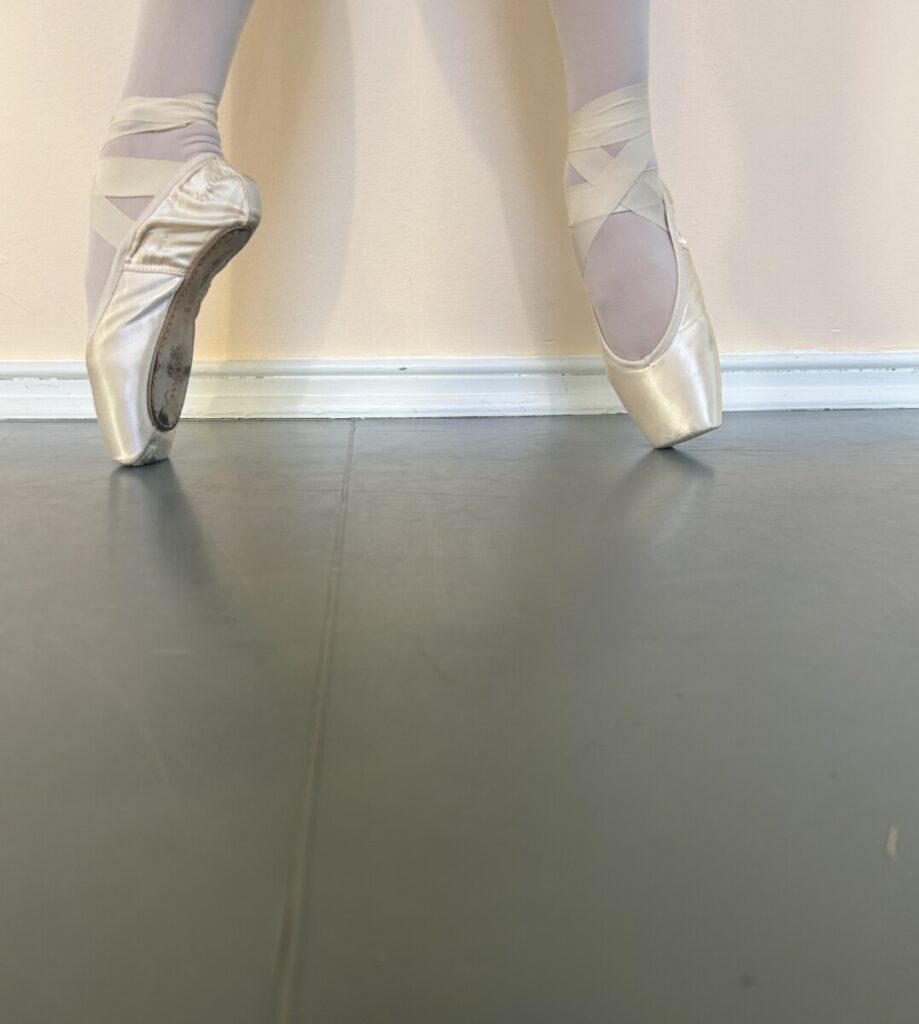Valentina Baldini, Arts and Tech Editor
@vbaldinicourant
Kristin Ruggieri is a previous dancer and the founder of Attitude Dance & Active Wear in Norwalk, CT. She has been fitting pointe shoes for dancers for 21 years and has over 4500 pairs of pointe shoes stocked in Attitude.
For more information on Attitude and their fittings, click here




Kristin opened Attitude when she was 25 years old. Since then, she has grown her business and fitted dancers from all over Connecticut. “My greatest passion is dance, and I hope our customers can see and feel that when they come into my store,” Kristin said. “Attitude is not just a business, it is a community. I know many of my customers by name and consider so many of them to be my friends.”

Pointe is a form of ballet where dancers wear a special type of shoe. “These shoes are designed with a hard toe box and a supportive insole that helps the dancer balance and support their weight on the tips of their toes,” Kristin said. “This technique allows for an ethereal, weightless quality to the movements,”
On the other hand, traditional ballet is danced in flat shoes made of canvas or leather. “Ballet flats fit and feel like a sock with a thin leather sole, often split in the middle to facilitate more flexibility of the foot,” Kristin said. “Pointe shoes are much more complicated. The sole is hard but still flexible, made by layers of pressed cardboard and leather to support the arch.”

Finding the perfect pointe shoe is much more complicated than your normal shoe shopping. It must correlate to the dancers strength, height, and shape of their foot. “The shoe needs to mimic the shape of their feet. If the toes are long and tapered, or short and square, the box needs to be as well,” Kristin said. “The hardness of the paste and the shank depend on how flexible the foot is and how strong the dancer is.”
After finding the dancer’s measurements, they must go through the fitting process. “First, I select the proper padding and then measure the length and width of the foot. If the dancer has already been on pointe, I will look at their last pair of shoes and evaluate the wear pattern,” Kristin said. “From that point, it’s trial and error. I will then have an ongoing dialogue with the dancer to find the shoe that looks and feels the best.”

There are thousands of different pointe shoes that vary from size, brand, shape and more, so everyone can find a pair that works for them. “When I started dancing on pointe, there were a limited number of manufacturers and only a handful of styles from each brand. My store now carries almost 60 different models of different variations.” Kristin said.
“They vary in shape, box length, hardness and heel height, to name a few variations. Every dancer’s foot and ankle is unique, from the size to the shape and flexibility,” Kristin said. “Dancers must sew their own pointe shoes to hold the heel of the shoe on their foot, and the ribbons must be sewn at the highest part of the arch to pull the shank onto the arch and support the instep.”

Dancers must go through rigorous training to ensure they are strong enough for pointe and can prevent injury. “A dancer must have sufficient strength and flexibility along with excellent technique to be considered ready for pointe work,” Kristin said. “It is very important for the dancer’s safety that they are able to engage very specific musculature to lift their body weight out of their legs and away from the floor.”
“A force of four times your body weight goes into your feet every time you go on pointe so the dancer must be strong,” Kristin said. “I would not recommend putting a dancer on pointe unless they are taking a minimum of three technique classes a week and have been cleared by a physical therapist who specializes in dance.”
Kristin ensures she supplies dancers with the best possible pair of pointe shoes. “I’m lucky to be surrounded by people who understand my mission,” Kristin said. “It’s my goal to provide a place where dancers can find everything they need, and also get the best possible pointe shoe fittings.”




